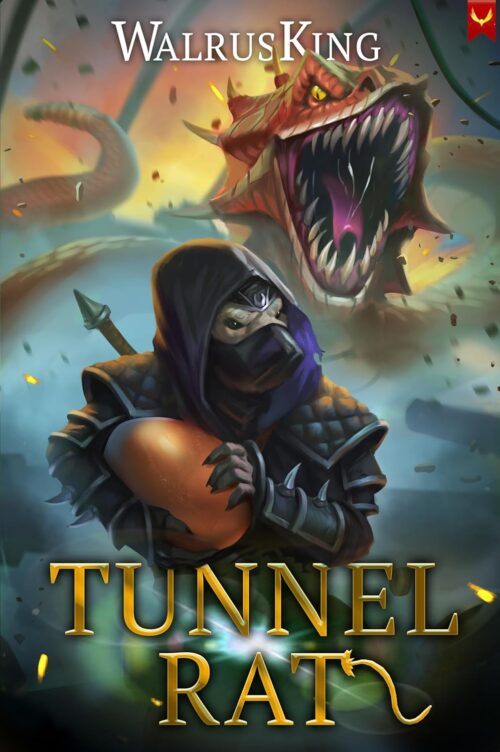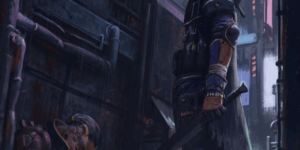Tunnel Rat: Causing Trouble in Two Worlds by The Walrus King is a strong example of LitRPG done right, with two distinct but well-developed settings: a crumbling dystopian future in the real world, and a vast, immersive fantasy game world called Genesis Engine. Both environments feel fully fleshed out, and the author does a good job balancing time between the two, giving readers an equal sense of depth, stakes, and character development in each.

Tunnel Rat Review
The story follows Milo, a genetically modified and disabled tech genius who lives in the tunnels and maintenance shafts of a massive, decaying structure known as the South Philadelphia Habitat. His world is one of jury-rigged repairs, scavenged parts, and constant survival amidst poverty and neglect. When he manages to steal a cutting-edge immersion pod, Milo enters Genesis Engine, where he can finally operate without the physical limitations of his real body. But instead of using the game as an escape, he uses it as a new frontier, delving into forgotten ruins, solving ancient mysteries, and pushing his talents to the limit.
Milo is an unusual protagonist, antisocial, paranoid, and sometimes erratic. He’s the product of severe childhood trauma and experimental augmentation, which makes him incredibly capable but often emotionally disconnected. His growth arc, learning to connect with others, build trust, and function as part of a team, is one of the story’s most engaging aspects. His characterisation is uneven at times, and there are moments where his actions feel more like the author guiding the story than the result of consistent motivation. But overall, Milo is compelling, flawed, and fun to follow, especially when his engineering genius is put to creative use in both worlds.
The writing style is fast-paced and leans toward high-output web serial formatting. There are some typos and grammar mistakes, which is typical for a story with such a high chapter count and ongoing updates, but they don’t detract significantly from the experience. The tone strikes a good balance between humour, introspection, action, and problem-solving, with a consistent voice throughout. The author clearly enjoys what they’re writing, and it shows.
The game mechanics and LitRPG system are well-integrated. Skills grow logically, and the blending of tech and magic feels fresh even in a crowded genre. The system isn’t just a backdrop, it’s a central part of how Milo interacts with the world, builds tools, and overcomes challenges. This is particularly important in the game world, where dungeons, creatures, and ancient lore are tied into the same sense of mechanical logic that defines Milo’s character.
Characterisation beyond Milo is another strength. Side characters are well-defined, distinct, and contribute meaningfully to the plot. They have flaws, personalities, and motivations of their own. While Milo remains the clear centre of the story, the supporting cast adds variety and emotional texture. Even minor characters often feel like they could carry their own stories.
One of the few areas where Tunnel Rat stumbles is in pacing and focus. With over 400 chapters (I’m up to chapter 388) and counting, the story occasionally meanders or gets sidetracked. Some readers may find the regular shifts between the real world and game world to be jarring, especially when the stakes in one setting temporarily outweigh the other. There’s also a risk that as the scope of the story expands, it may lose sight of the grounded, personal elements that made the early chapters so compelling, namely, Milo’s engineering projects and relationships.
Despite that, the author has proven capable of tying disparate plot threads together in satisfying ways. Earlier hints and seemingly unrelated subplots often converge during climactic events, which helps justify the slower or more tangential sections. There is also a high degree of trust earned from the reader due to the consistent quality and clever payoffs.
In terms of themes, Tunnel Rat touches on survival, trust, loneliness, trauma, and personal growth. It doesn’t try to make overt political statements about disability or class, though both are integral to the setting. Milo’s disability is real, but his in-world prosthetics and eventual upgrades sometimes render it moot. Some readers might see this as a missed opportunity for deeper commentary, but others will appreciate the focus on capability over limitation.
The dual-world setting is one of the strongest features of the book. Both the South Philly Habitat and Genesis Engine feel alive, complex, and believable. The author puts real effort into making each system, mechanical or magical, work with internal logic. Whether Milo is welding together a ventilation bypass in the tunnels or reverse-engineering ancient dungeon tech in-game, the story stays true to its tone and premise.
Tunnel Rat: Causing Trouble in Two Worlds is a smart, fun, and engaging LitRPG with a strong central character, solid worldbuilding, and an addictive structure. It has flaws, pacing issues, some inconsistencies in character behaviour, and a few grammatical hiccups, but they are outweighed by the strengths. The story has heart, humour, mystery, and a deep appreciation for engineering, systems, and problem-solving. If you enjoy stories where a loner genius slowly finds purpose and connection, while exploring a layered world full of hidden threats and ancient puzzles, this is one worth reading. Highly recommended for LitRPG and sci-fi/fantasy fans.
If you like Tunnel Rat, you’ll probably enjoy, The Butcher of Gadobhra. By the same author and set in the same world, but with different characters with the occasional story crossover.
If you’re a fan of long, character-driven slice-of-life webnovels, you might also enjoy reading my review of The Vengeful Scribe.










